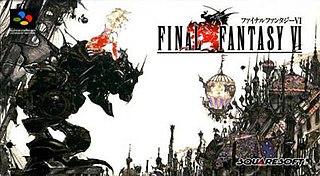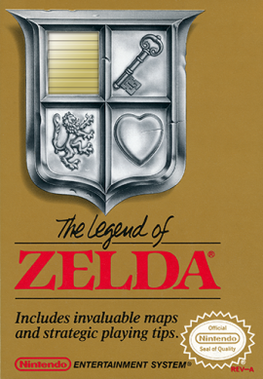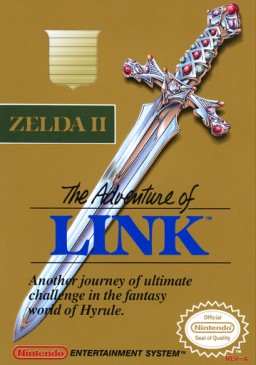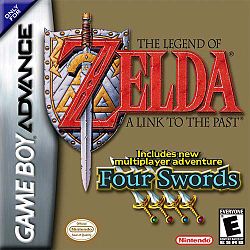
Final Fantasy VI, also known as Final Fantasy III from its initial North American release, is a 1994 role-playing video game developed and published by Square for the Super Nintendo Entertainment System. It is the sixth main entry in the Final Fantasy series, the final to feature 2D sprite based graphics, and the first to be directed by someone other than series creator Hironobu Sakaguchi; the role was instead filled by Yoshinori Kitase and Hiroyuki Ito. Long-time collaborator Yoshitaka Amano returned as character designer and concept artist, while composer Nobuo Uematsu returned to compose the game's score, which has been released on several soundtrack albums.

Final Fantasy Adventure, known in Japan as Seiken Densetsu: Final Fantasy Gaiden or simply Seiken Densetsu, and later released in Europe as Mystic Quest, is an action role-playing video game developed and published by Square for the Game Boy. It is a spin-off of the Final Fantasy series and the first game in the Mana series.

Donkey Kong Country 3: Dixie Kong's Double Trouble! is a 1996 platform game developed by Rare and published by Nintendo for the Super Nintendo Entertainment System (SNES). It was released in November 1996 in North America and Japan, and on 13 December in Europe and Australia. It is the third installment of the Donkey Kong Country series and serves as a direct sequel to Donkey Kong Country 2: Diddy's Kong Quest. It was also re-released for the Game Boy Advance (GBA) in 2005. The game was made available to download on the Wii's Virtual Console service in 2007, as well as for the Wii U's Virtual Console in 2014.

The Legend of Zelda, originally released in Japan as The Hyrule Fantasy: Zelda no Densetsu, is an action-adventure game developed and published by Nintendo. The first game of The Legend of Zelda series, it is set in the fantasy land of Hyrule and centers on an elf-like boy named Link, who aims to collect the eight fragments of the Triforce of Wisdom in order to rescue Princess Zelda from Ganon. The player controls Link from a top-down perspective and navigates throughout the overworld and dungeons, collecting weapons, defeating enemies and uncovering secrets along the way.

The Legend of Zelda: A Link to the Past is an action-adventure game developed and published by Nintendo for the Super Nintendo Entertainment System. It is the third game in The Legend of Zelda series and was released in 1991 in Japan and 1992 in North America and Europe.

The Mana series, known in Japan as Seiken Densetsu, is a high fantasy action role-playing game series created by Koichi Ishii, with development formerly from Square, and is currently owned by Square Enix. The series began in 1991 as Final Fantasy Adventure, a Game Boy handheld side story to Square's flagship franchise Final Fantasy. The Final Fantasy elements were subsequently dropped starting with the second installment, Secret of Mana, in order to become its own series. It has grown to include games of various genres within the fictional world of Mana, with recurring stories involving a world tree, its associated holy sword, and the fight against forces that would steal their power. Several character designs, creatures, and musical themes reappear frequently.

Zelda II: The Adventure of Link is an action role-playing game developed and published by Nintendo. It is the second installment in the Legend of Zelda series and was released in Japan for the Famicom Disk System on January 14, 1987—less than one year after the Japanese release and seven months before the North American release of the original The Legend of Zelda. Zelda II was released in North America and the PAL region for the Nintendo Entertainment System in late 1988, almost two years after its initial release in Japan.
Dragon Quest Monsters is a spin-off series of the Dragon Quest games. Primarily developed by Tose and published by Square Enix, it sets the player in a medieval/fantasy world filled with magic, monsters and knights. Unlike the original Dragon Quest games, the player's character does not do any of the fighting in battles; instead the player has to rely on capturing, breeding and raising monsters to do the fighting for them. The concept originated from Dragon Quest V (1992). The character and monster designs are by Dragon Ball creator, Akira Toriyama. The series spans several handheld gaming systems, and each game has received positive reviews from critics. The series' gameplay has been compared to Pokémon.

Mega Man Zero 2 is a video game developed by Inti Creates and published by Capcom for the Game Boy Advance (GBA) handheld game console. It is the second video game in the Mega Man Zero subseries of Mega Man video games.

Bomberman Jetters is an action game for the Game Boy Advance, GameCube and PlayStation 2, and part of Hudson Soft's Bomberman series. The game builds on the gameplay style established in the previous Bomberman series entry, 2002's Bomberman Generation, and features characters and settings from the 2002 anime series Bomberman Jetters. The GameCube version utilizes cel-shaded graphics similar to those of Bomberman Generation, while the PlayStation 2 version does not.

Densetsu no Stafy 4 is a platform video game developed by Tose and published by Nintendo for the Nintendo DS. It is the fourth game in The Legendary Starfy series. As with the other games in the series, Densetsu no Stafy 4 features Stafy, known as Starfy in Western regions, as the main character. He is joined by his sister Starly and his friend Moe the clam. The three of them help out other undersea creatures and fights numerous villains.

Kid Icarus: Of Myths and Monsters is a platform game developed and published by Nintendo for the Game Boy It is a sequel to Kid Icarus (1986) for the Nintendo Entertainment System. It was released in North America on November 5, 1991, and in Europe on May 21, 1992. Despite being developed in Japan it was originally not released there until on February 8, 2012 through the 3DS Virtual Console, which, however, retained its original English title, in an effort to commemorate the release of Kid Icarus: Uprising, followed by its re-release in Europe on March 8, and North America on July 19. The story of Of Myths and Monsters is influenced by Greek and Roman mythology, and follows the angel soldier Pit on his quest for three sacred treasures. His objective is to defeat the demon Orcos, who has invaded the kingdom of Angel Land. The game features the core gameplay mechanics of its predecessor. Players explore two-dimensional environments while collecting items and fighting monsters. Of Myths and Monsters was named the 18th best Game Boy game by Nintendo Power, and commended by critics for its gameplay, graphics, and music.

The Legendary Starfy is a video game series developed by Tose and published by Nintendo. The series is the only franchise for which Tose owns the copyright, which they share with Nintendo; as a result, Tose, which normally does not put their company name on their games, does so in the Starfy series. The series began in 2002 with Densetsu no Stafy for the Game Boy Advance, and four sequels were released. For its first seven years, Starfy games were not released outside Japan. The fifth and latest game in the series was released as The Legendary Starfy in North America on June 8, 2009.

Tose Co., Ltd. is a Japanese video game development company based in Kyoto. It is mostly known for developing Nintendo's Game & Watch Gallery series, various Dragon Ball games, as well as other Nintendo products. Tose has developed or co-developed over 1,000 games since the company's inception in 1979, but is virtually never credited in the games themselves. Tose maintains a policy of having no creative input into the work they do, going so far as to refuse to put their names in the credits for most of the games they work on. As such, Tose has gained a reputation for being a "ghost developer".

The Legend of Zelda: A Link to the Past and Four Swords is a compilation of two action-adventure games co-developed by Nintendo R&D2 and Capcom and published by Nintendo for the Game Boy Advance. The game was released in December 2002 in North America and in March 2003 in Japan and Europe. The cartridge contains a modified port of A Link to the Past, originally released for the Super Nintendo Entertainment System in 1991, and an original multiplayer-only game titled Four Swords, which serves as the 9th installment in The Legend of Zelda series.

Densetsu no Stafy is a platform video game developed by Tose and published by Nintendo for the Game Boy Advance system exclusively in Japan on September 6, 2002. It is the first game in the series The Legendary Starfy.

Densetsu no Stafy 3 is a platforming video game developed by Tose and published by Nintendo for the Game Boy Advance only in Japan on August 5, 2004. It is the third game in The Legendary Starfy series, as well as the third and last title of the series developed and released for the Game Boy Advance. Later, its sequel, Densetsu no Stafy 4, was developed for the Nintendo DS.

Nintendo Software Planning & Development Division, commonly abbreviated as Nintendo SPD, was a Japanese research, planning and development division owned by Nintendo and housed inside the Nintendo Development Center in Kyoto, Japan. The division had two departments: Software Planning & Development Department, which primarily co-produced games with external developers; and Software Development & Design Department, which primarily developed experimental and system software. The division was created during a corporate restructuring in September 2003, with the abolition of the Nintendo R&D1 and Nintendo R&D2 departments.

The Legendary Starfy, known as Densetsu no Stafī: Taiketsu! Daīru Kaizokudan in Japan, is a 2008 platform video game developed by Tose and published by Nintendo for the Nintendo DS handheld video game console. It is the fifth game in The Legendary Starfy video game series. On June 8, 2009, the game became the first, and so far the only, in the series to be released outside Japan.

Shiren the Wanderer GB2: Magic Castle of the Desert is a roguelike role-playing video game developed by Chunsoft. It is part of the Mystery Dungeon series, and is a sequel to Shiren the Wanderer GB: Monster of Moonlight Village. It was originally released for the Game Boy Color by Chunsoft in 2001. A Nintendo DS remake was released by Sega later in 2008.



















